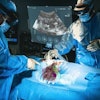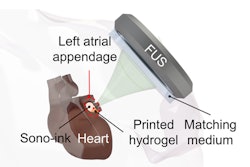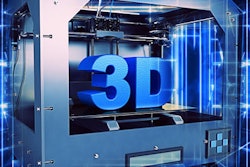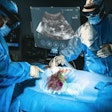
It may be challenging for radiology departments to launch a 3D printing laboratory, but it's worth the effort to improve patient care, according to an article published online February 4 in RadioGraphics.
"Incorporating the potential and strengths of 3D printing technology into radiology departments can allow radiologists to take the lead in this emerging field and enhance our contributions to health care," wrote a multi-institutional team of researchers led by Dr. Sarah Bastawrous of the University of Washington School of Medicine.
Medical 3D printing has been shown in the literature to benefit patients for a variety of clinical applications, including orthopedic surgery, treatment of cardiovascular diseases, and neurosurgery, according to the authors. It's also been shown to be efficacious for patients with abdominal, hepatobiliary, and gastrointestinal conditions. What's more, patient-specific 3D models have been deemed to be helpful for enhancing communication between patients and their medical teams.
 Right renal mass discovered during workup for hematuria in a 68-year-old man. (A) Axial fat-suppressed contrast-enhanced T1-weighted MR image shows heterogeneous but avid enhancement of a right renal mass (arrow), which was pathologically confirmed to be clear cell renal cell carcinoma. The patient subsequently underwent right partial nephrectomy. (B) Axial (upper left), sagittal (lower left), and coronal (lower right) contrast-enhanced T1-weighted MR reformation images show segmentation of the renal mass (outlined in purple) and the kidney. The 3D virtual model (top right) shows the tumor in purple, kidney in gray, arteries and aorta in red, and veins and inferior vena cava in blue. The final stereolithography files were imported into software and overlaid on the original DICOM images to ensure accuracy before the model was printed. (C) Photograph of the 3D printed model (which was requested for presurgical planning) shows the right renal tumor in purple (arrow). Images courtesy of the RSNA.
Right renal mass discovered during workup for hematuria in a 68-year-old man. (A) Axial fat-suppressed contrast-enhanced T1-weighted MR image shows heterogeneous but avid enhancement of a right renal mass (arrow), which was pathologically confirmed to be clear cell renal cell carcinoma. The patient subsequently underwent right partial nephrectomy. (B) Axial (upper left), sagittal (lower left), and coronal (lower right) contrast-enhanced T1-weighted MR reformation images show segmentation of the renal mass (outlined in purple) and the kidney. The 3D virtual model (top right) shows the tumor in purple, kidney in gray, arteries and aorta in red, and veins and inferior vena cava in blue. The final stereolithography files were imported into software and overlaid on the original DICOM images to ensure accuracy before the model was printed. (C) Photograph of the 3D printed model (which was requested for presurgical planning) shows the right renal tumor in purple (arrow). Images courtesy of the RSNA.Currently, the scope of 3D printing at point-of-care facilities varies dramatically, but it is expected to increase over time, according to the authors. Future directions of 3D printing include bioprinting and personalized drug dosing.
Money matters
Before launching an in-house 3D-printing program, the researchers recommend performing a thorough needs assessment and creating a budget that accounts for both fixed and variable costs. Although 3D printing technology has become more affordable, initial monetary and time investments can be substantial, the authors said.
"Existing infrastructure such as a dedicated space, trained personnel, and a clinical need are starting points to consider," they wrote. "Facilities and building requirements, staffing needs, funding, training opportunities, and access to in-house subject matter experts from requesting departments are also important components to assess."
It's critical to get support for the 3D-printing service from the institutional governing body, according to the authors. This often includes making a business case. Return on investment for 3D printing is grouped into four categories:
- Patient outcomes
- Cost savings and/or cost avoidance
- Access to care
- Innovations in treatment
It's also important to understand what types of models are important to multidisciplinary providers, according to the researchers.
Infrastructure, workflow
The infrastructure to support point-of-care 3D printing encompasses staff and training, as well as facility requirements relating to space, construction, and power, according to the researchers. What's more, a digital workflow must be developed to include the steps from model ordering through queuing for printing. A robust quality management system is also required.
The researchers also noted that the RSNA's 3D Printing Special Interest Group has developed useful guidelines, including practice parameters, recommendations, and clinical appropriateness criteria.
A challenging commitment
In an accompanying commentary, Dr. David Ballard of the Washington University School of Medicine noted it can be a difficult financial commitment to start a 3D printing laboratory primarily to provide a clinical service.
Annual operational expenses for radiologists (to oversee image segmentation) and engineers could reach $150,000. And although 3D printers that cost $5,000 to $15,000 can generate good-quality anatomic models, printers that cost $300,000 produce much better results, Ballard said.
"3D printing as a clinical service is time-consuming, and the radiologists involved should be appropriately sourced, as they would be to other clinical services," he noted. "Hospital support and reimbursement agreements can be pursued to potentially break even and at least cover operational expenses of a 3D printing laboratory."
However, adding a research-focused and funded element to a 3D printing laboratory that's providing clinical services may also lead to dissatisfaction if individuals are unable to accomplish their research goals, according to Ballard.
"An understanding of the costs and personnel allocation required and the information provided by Bastawrous et al can inform decision making on starting a radiology department 3D printing laboratory," Ballard wrote.




















